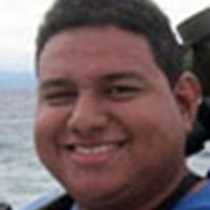Our journey aboard the National Geographic Sea Lion started seven days ago when we crossed the Panama Canal. We later explored one of the most important tropical biological island research centers on earth, known as Barro Colorado.
After exiting the Panama Canal, we watched the sunrise on Isla Iguana, which is located on the Azuero Peninsula. We later went to one of the most protected areas in Panama called Coiba National Park and where we had the privilege to swim in the warm waters, snorkel and paddleboard.
We also had the incredible opportunity to explore the most unique and remote areas of Costa Rica, ending our voyage in the beautiful Manuel Antonio National Park.
Manuel Antonio is a small national park located in the central Pacific area of Costa Rica, just south of the town of Quepos. This national park was established in 1972 to protect the biodiversity of this area. It considered as a one of the most famous destinations in Costa Rica with 150,000 visitors per year, Forbes magazine named it one of the 12 most beautiful national parks in the world.
We focused our voyage during this week on photography, so we split into groups and went hiking along the trails of this areas. Animals showed up: we saw three female sloths with babies on their bellies, it was also amazing to see white faced-throated monkey (cebus capuchinus) mantled howler monkey (alloata paliata) squirrel monkey (saimiri oerstedii) two-toed sloth (choloepus hoffmanni) Central American agouti (Dasyprocta punctata) white nosed coatis (nasua narica) and crab-eating raccoons (Procyon cancrivorus).
We returned back to the National Geographic Sea Lion to have lunch and charge our batteries. We returned to the beach and continued to enjoy Manuel Antonio. Was a great ending on the last day of our journey.







